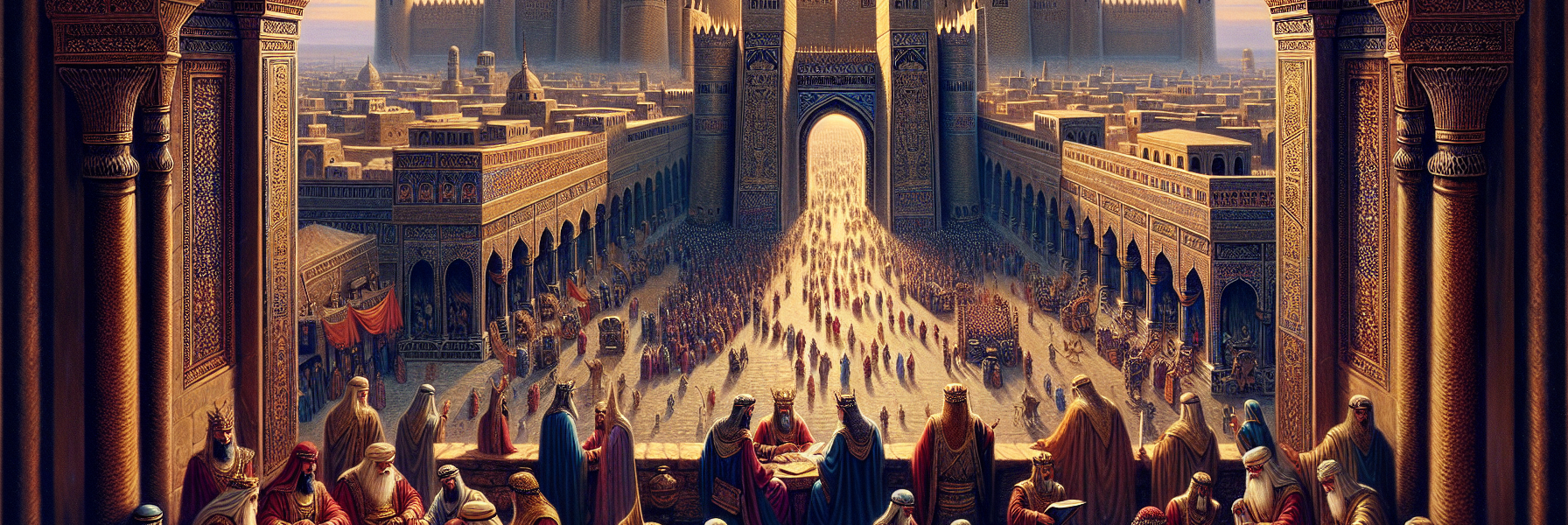**The Hidden Queen: A Tale of Esther’s Rise**
The great citadel of Susa stood as a jewel of the Persian Empire, its towering walls gleaming under the relentless sun, its gates bustling with merchants, soldiers, and officials from every corner of the vast kingdom. Yet within its opulent halls, a shadow lingered over King Ahasuerus—a shadow of regret. His beloved queen, Vashti, had been banished for her defiance, and though his anger had cooled, the throne beside him remained empty.
The king’s advisors, ever eager to serve (and to secure their own influence), approached him with a solution. “Let a search be made for beautiful young virgins throughout all the provinces of your kingdom,” they suggested. “Let the young woman who pleases the king most become queen instead of Vashti.”
The decree went forth, carried by swift horsemen to every corner of the empire, from India to Ethiopia. In the fortified city of Susa, within the Jewish quarter, a young woman named Hadassah—known also as Esther—lived under the care of her cousin Mordecai, a devout man of the tribe of Benjamin. Esther was orphaned as a child, and Mordecai had raised her as his own daughter, instilling in her both wisdom and quiet faith.
Esther was strikingly beautiful, with dark, luminous eyes and a grace that drew admiration wherever she went. When the king’s edict reached the city, she was among the young women taken to the palace, though not by choice. Mordecai, ever watchful, instructed her carefully: “Do not reveal your people or your family, for the times are uncertain.” Esther obeyed, keeping her Jewish heritage hidden as she entered the gilded cage of the king’s harem.
The palace of the women was a world of perfumed chambers, silk hangings, and whispered rivalries. Hegai, the king’s eunuch and overseer of the concubines, took an immediate liking to Esther. Recognizing her dignity and quiet strength, he granted her favor, providing her with the finest cosmetics, rich garments, and a place of honor among the candidates. Yet Esther did not grasp for power or flaunt her beauty as others did. She listened, she learned, and she waited.
For twelve long months, each young woman underwent the elaborate preparations required before being presented to the king—six months with oil of myrrh, six with perfumes and cosmetics. When Esther’s turn came at last, she did not demand extravagant adornments. She accepted only what Hegai advised, trusting his wisdom.
The night she was led to the king’s chambers, the palace was alive with torchlight, the air thick with the scent of incense. Ahasuerus, seated upon his throne in robes of purple and gold, watched as Esther approached. There was no arrogance in her gaze, no desperate flattery in her words—only a quiet radiance that captivated him.
And in that moment, the king’s heart was moved as it had not been since Vashti’s days. He loved Esther more than all the other women, and she won his favor and approval above every maiden in the land. So he set the royal crown upon her head and declared her queen in Vashti’s place, seating her upon the throne with great celebration. A feast was proclaimed in her honor, and gifts were distributed throughout the provinces in the name of King Ahasuerus.
Yet even in her newfound glory, Esther did not forget her people—or the man who had raised her. Mordecai, though now the cousin of the queen, remained at the king’s gate, watching over her from afar. And though she wore the crown of Persia, in her heart, she remained Hadassah, the hidden daughter of Israel.
For in the unseen hand of Providence, a greater story was unfolding—one that would soon demand all her courage, all her faith. But for now, the palace rejoiced, unaware that the true queen had not yet risen to her greatest hour.




